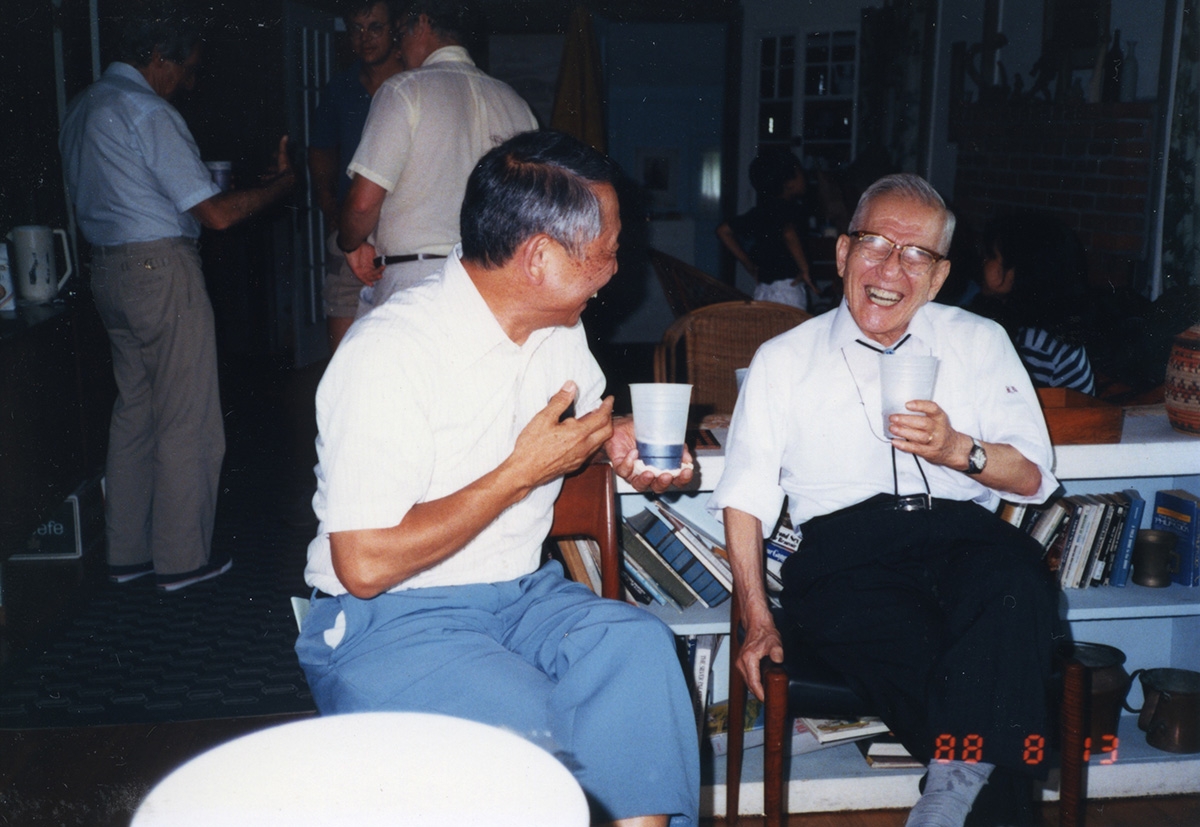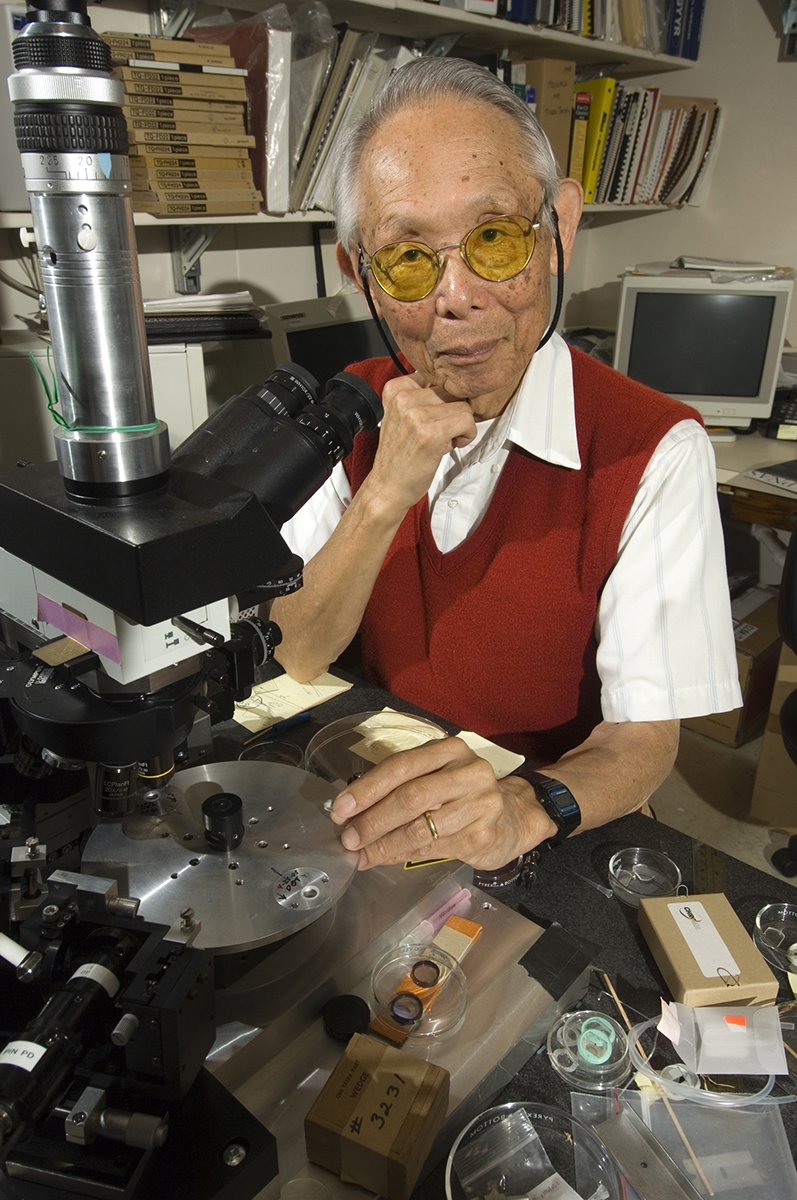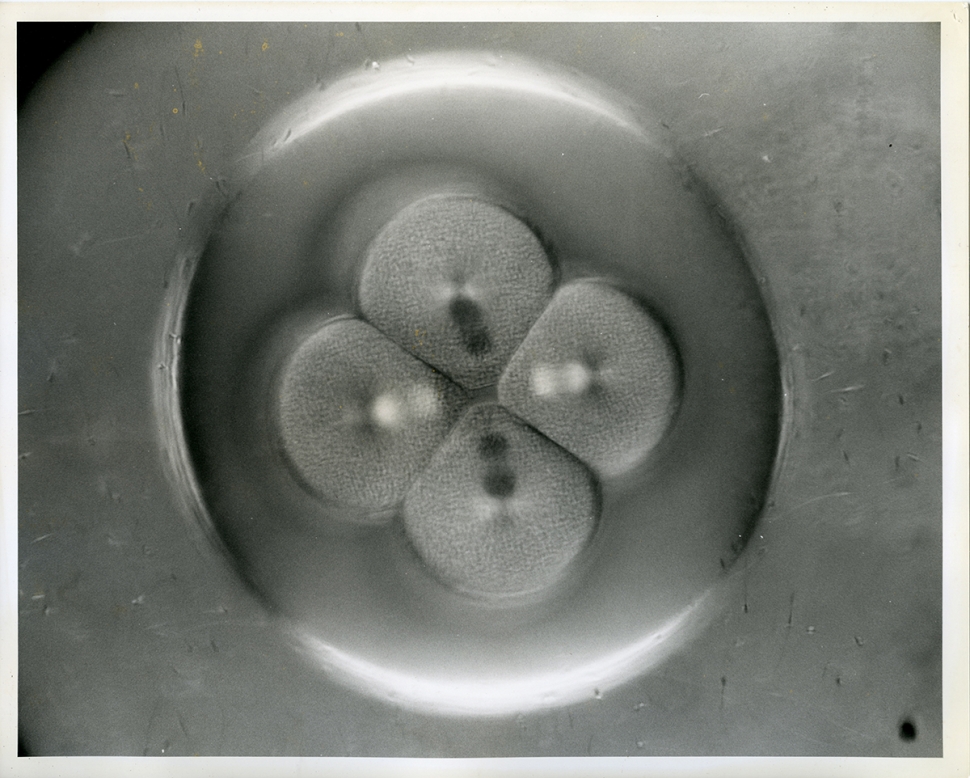Shinya Inoué
Shinya Inoué was born in England in 1921 to a Japanese diplomat. Inoué spent many of his early years abroad. Returning to Japan for high school, he often struggled with the Japanese education system. In 1941, an unconventional teacher, Katsuma Dan, started teaching Inoué zoology, and Inoué’s enthusiasm for experimental biology grew.


The occasion was for Katy (Katsuma Dan) and me to try repeating W. J. Schmidt’s observation of the birefringent spindle in dividing sea urchin eggs. Although our observations under air-raid black-out curtains that evening were inconclusive, it triggered my 60+ years’ interest in cell division and how to listen to happy live cells through the light microscope.
The image to the right depicts a sand dollar embryo showing four cells with the birefringence of the spindle fibers contained within them. The orientation of the spindle determines whether the birefringence of its fibers is bright or dark. One benefit of using polarized light microscopy is creating contrast without using exogenous labels.
 HoverTouch to magnify
HoverTouch to magnify
1. Photographic portrait of Shinya Inoué, 2006, courtesy of the Marine Biological Laboratory and credit to Tom Kleindinst.
2. Still Image: "Shinya Inoué and Katsuma Dan, 1988", https://hdl.handle.net/1912/22640.
3. Still Image: "Sand Dollar Embryo, 1975", https://hdl.handle.net/1912/22630.